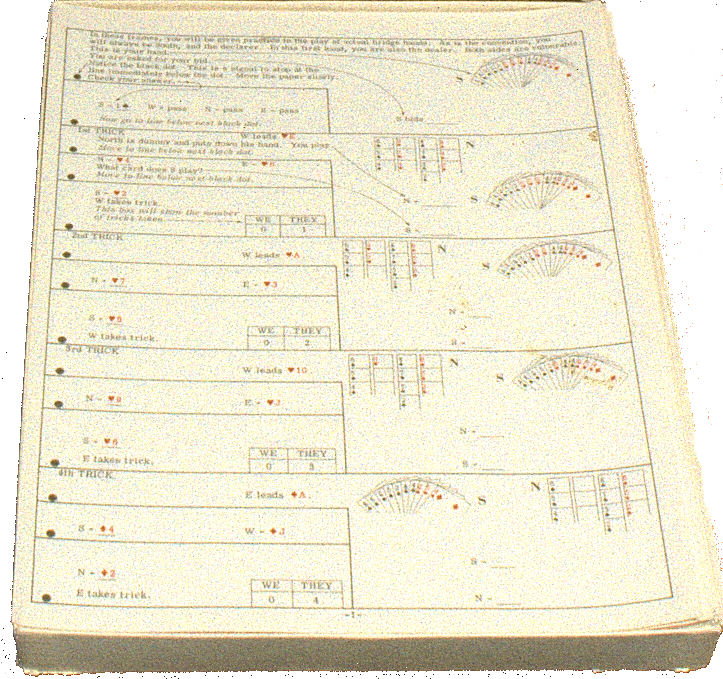Before the age of microcomputers, a number of devices were made available in the 1960s which offered users opportunities to learn a range of things - one step at a time. These devices were called "Programmed Instruction". At first the device was nothing more than a bound book. On each page, a box on the left of the page either offered a "fact" or asked a question. A box on the right of the page either provided a comment or left a space for the user to write in an answer to the question. The following picture is an example of a programmed instruction page. A user was told to use a blank sheet of paper or cardboard, and slide it down the page, exposing only one instructional frame at a time.

The concepts behind programmed instruction were based upon earlier experiments conducted for the military and business corporations by educational psychologists. The subjects at first concerned teaching technical information. Eventually, programmed instruction was commercially applied to leisure subjects. In time, programmed instruction books were done away with, and "Programmed Instruction Machines" became availalble.

The photograph at the left is a Programmed Instruction Contract Bridge Teaching Machine in the Museum Collection. The device "MIN/MAC III" was donated to the Museum in 1971. It was manufactured by Teaching Machines Inc. (TMI-Grolier), New Mexico (US), about 1963.
The teaching machine device is made of plastic and is 37cm long x 25.5cm wide.
With respect to depth, the top the machine is 12.4cm and it narrows to 4.4cm at the bottom. The top is a lid hinged at the back. On the top of the lid is a see-through plastic window and an opening for writting answers.

The base accepts one programmed instruction sheet at a time (pictured on the right). Two black plastic rollers inside the base attached to two wheels outside of the base at the top along side the "window", enable a user to roll the next page "frame"into the see-through plastic window.
The programmed instruction sheets are titled "Easy Steps To Winning Bridge". The course is divided into 11 units, with 17 sheets of instructions (printed on both sides), and 14 pages of practice hands. The "desk" area of the lid is used to arrange suggested card "hands" or as a surface upon which to use the answer pad.

There is a box 28.9cm long x 22.3cm wide x 2.6cm depth (pictured on the left) in which the componets are stored. There are 220 components!
Of these, one is a 54 page "supplementary" instruction book about the game of Bridge, and another is a 21 page "booklet" about using the teaching machine.

There are also two "pads" included - one on which to write answers to the programmed questions (if one doesn't want to write on the instruction sheets so that they are reuseable by others), and a "score pad" for use in playing practice Bridge games.
Other components include a special deck of playing cards (8.9cm long x 5.7cm wide) on which "Goren Point Values" are imprinted on appropriate cards.
The "Goren system for winning at Bridge was very popular at the time the device was marketed. Part of Goren's system required that a player assign point values to cards held. "Bids" that could be made depended upon the points one held.

Thus, the playing cards with the Teaching Machine included a deck of cards with the point values imprinted on the cards in blue.
This special deck was to be used only for learning purposes, and not to be used for a "regular" game of Bridge.
It was assumed that "the student" who used the machine had memorized how to count the points by the time the course was completed.
Last update May 25, 2007